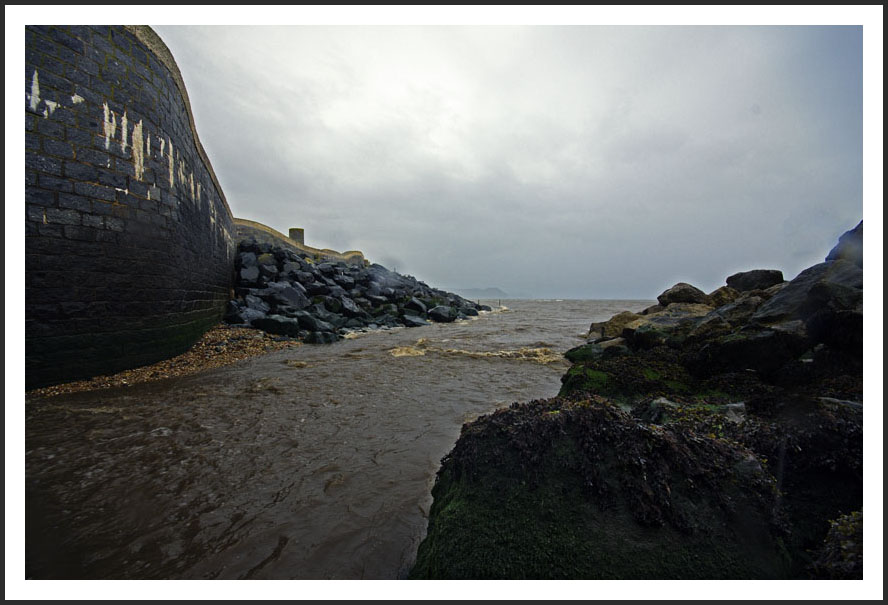

River Lim - Lyme Regis - Aug 2012
The valley of the Lym is just over 5 kilometres long and it falls 200 metres from source to the Channel Sea in Lyme Bay. Before reaching the bay the river runs along a short channelled and culvated section though the Eastern side of the of the town. A mill has been located along this stretch of the river since the 13th Century using the energy from the water in the river to drive a wheel via a separate feed taken from the river's main flow. The final mill built on site closed for good 1926 and now serves as a small hydro-electric generating station.
We start our explore of this section of river by the weir, shown in the film shot below, which is used to separate out the high level feed exclusively for use by the mill cum hydro-electric station. Strong rains the night before had significantly increased the usually weak flow down the river with often no more than a trickle of water running over the top the weir. The bridge carries the Northern end of Coombe Street over the river.
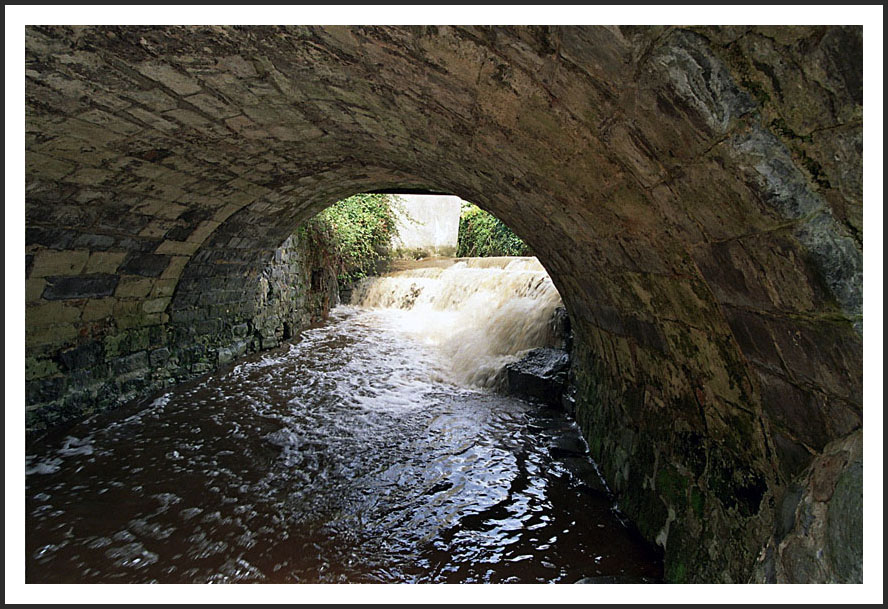
In this picture postcard view, taken slightly further down stream with the weir just beyond hidden from view, the river flows through a residential area along this channelled section parallel to the high level flow which is up to the right.
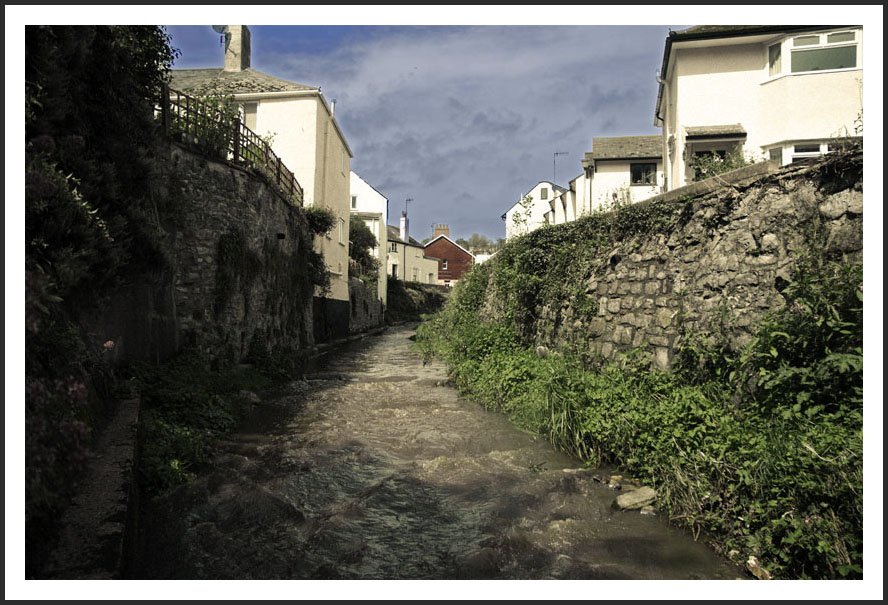
When the flow is very high, as it was on my visit, a second sluice further down the high level flow allows the excess water to run back into the low level river below.
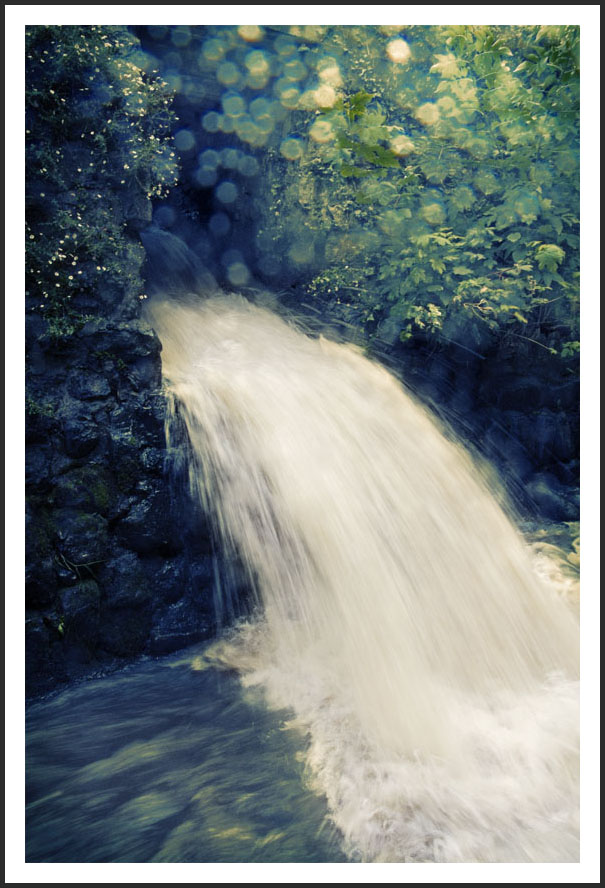
The river takes a dog leg shortly after the sluice and at this point the flow was really quite strong. At about two foot deep I found it near on impossible to walk down around the outer edge of the corner, such was the velocity of the water, so I had to walk down the inner edge after carefully feeling my way across the river, the centre of which I paused to take this picture with the film camera. The mill is to the left with the bridge providing pedestrian access.
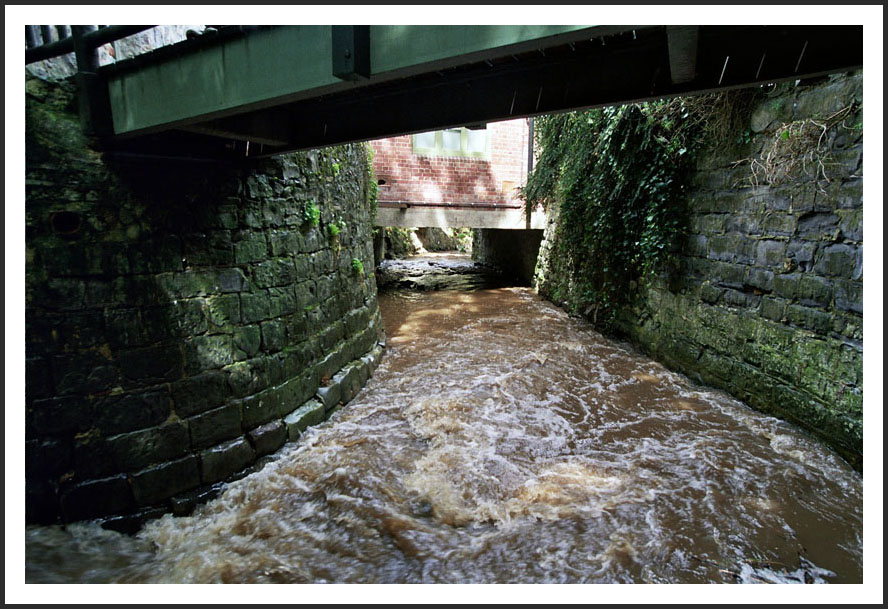
We progress further into Lyme Regis and things become slightly more industrialised as we pass under a few bridged sections. Again the flow of water was surprisingly strong at this section at about a foot deep near the centre. I wasn't concerned about falling in, more worried about giving my camera's a soaking, so I stayed near the walls, in the shallow areas.
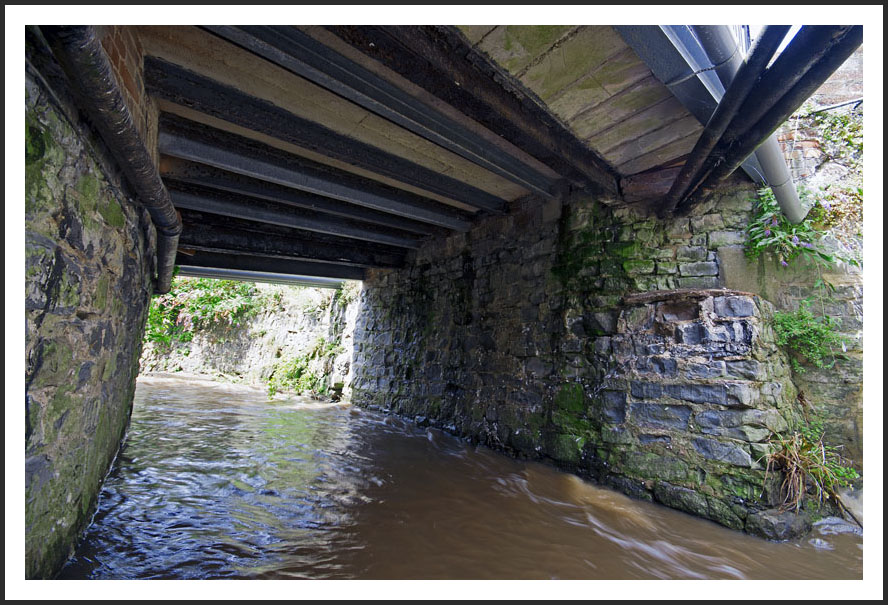
Slightly further down from the above picture the return from the mill's high level flow can be seen, along with a confused tourist who was more interested in taking pictures of me than anything else, as this film shot shows.
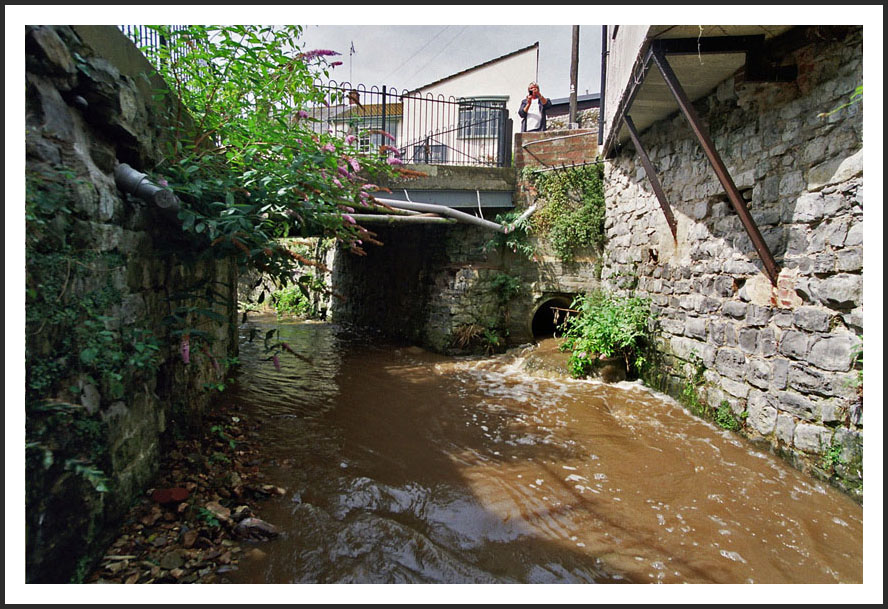
Now we are in the final lengths of the river before it reaches the sea, directly below the town and in the longest culvert which runs parallel to Coombe Street. Nice brickwork.

And a view looking back. That brickwork on the right looks like it's missing most of it's pointing.
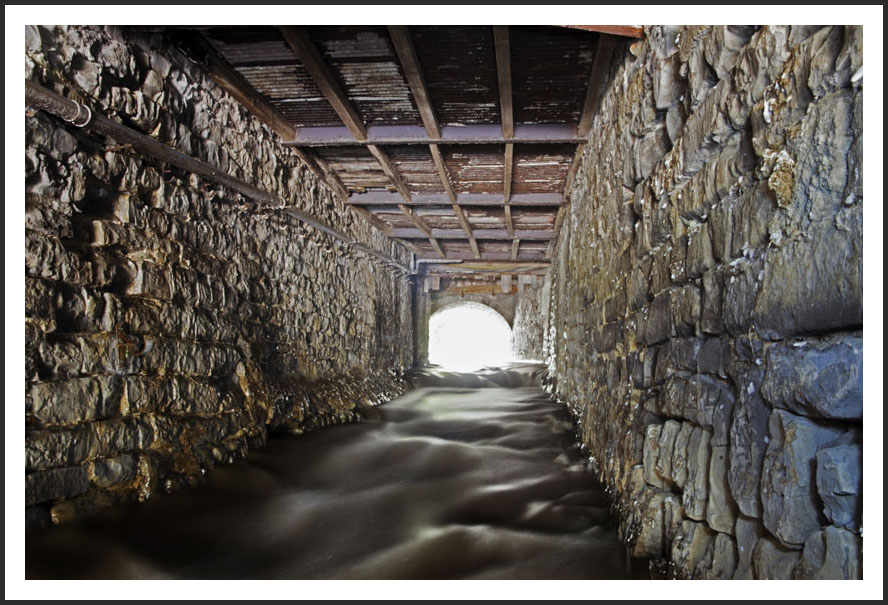
Further in a set of girders and some corrugated iron hold up what I think used to be a car garage based in Coomb Street. The power of the water was making the tripod shake so I put a fair bit of my weight on it to hold it still. Working in these conditions certainly concentrates the mind as the noise is terrific, it's quite dark and one false move on a lens change could see you waving goodbye to your favourite piece of glass forever.
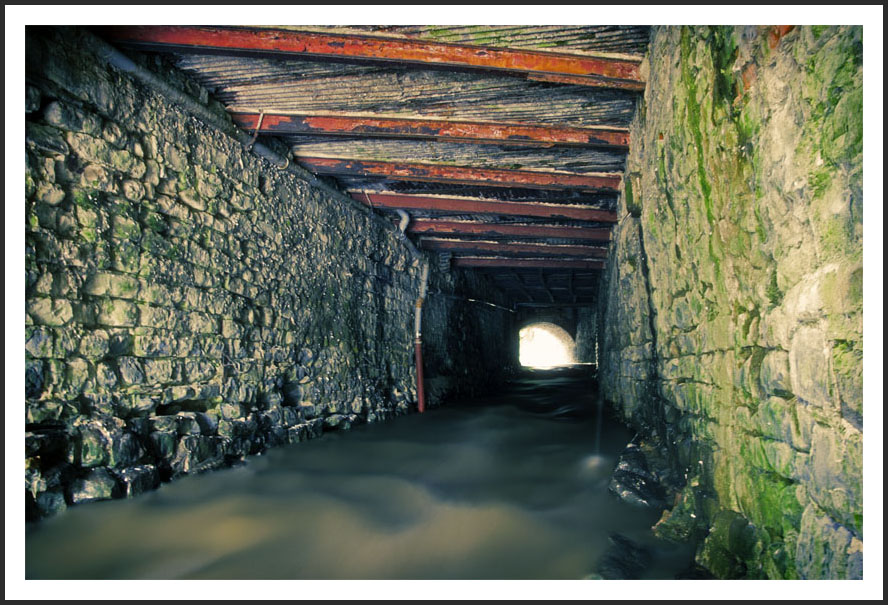
And out at the other end. I like the soil stack pipe work on the right, particularly the way it emerges from under the over hang where I guess once a toilet would once have been, discharging directly into the river.
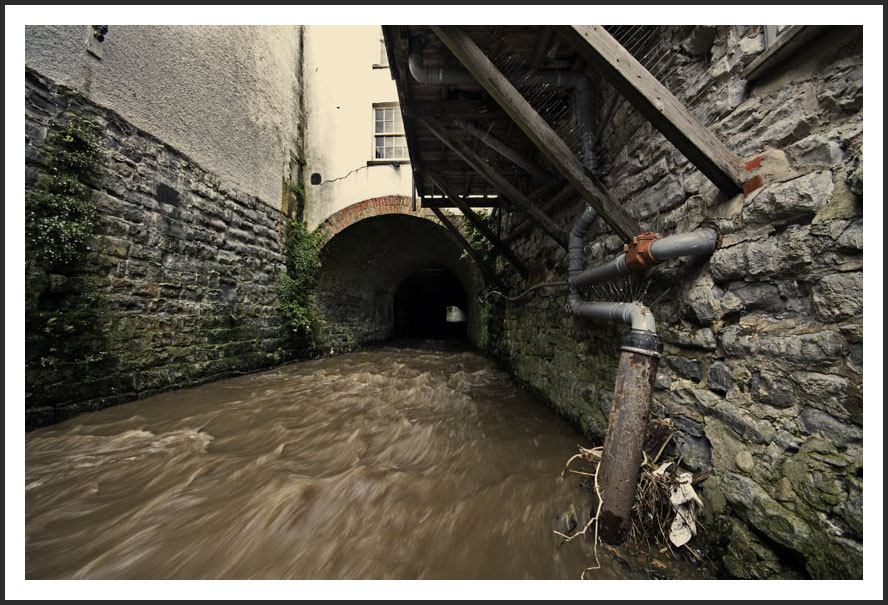
A little further on. More sewage pipe work to the right with an access manhole.
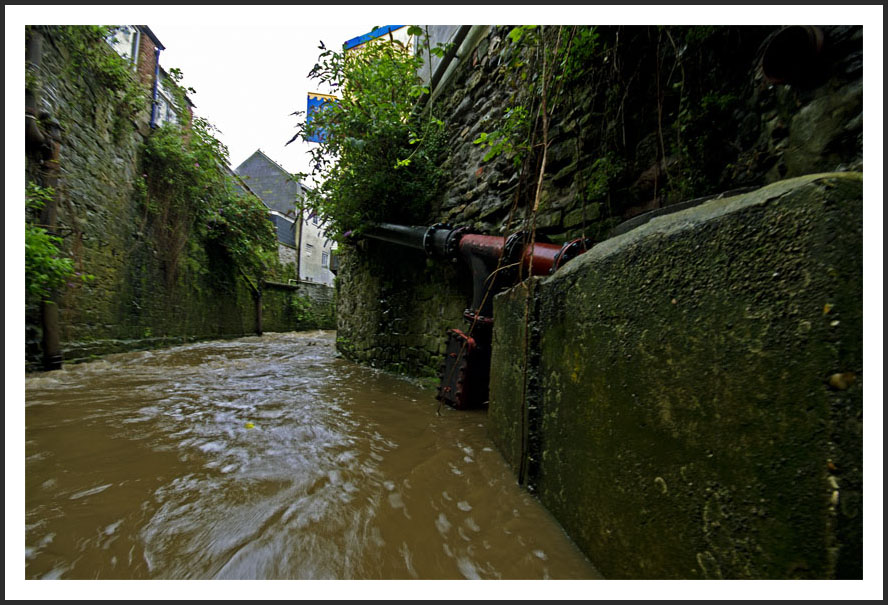
Rotating through 90 degrees we finally arrive near the rivers end. The bridge carries the towns main road, imaginatively named "Bridge Road". It was about this point that the flow was really at it's most concentrated so I stuck to sides.
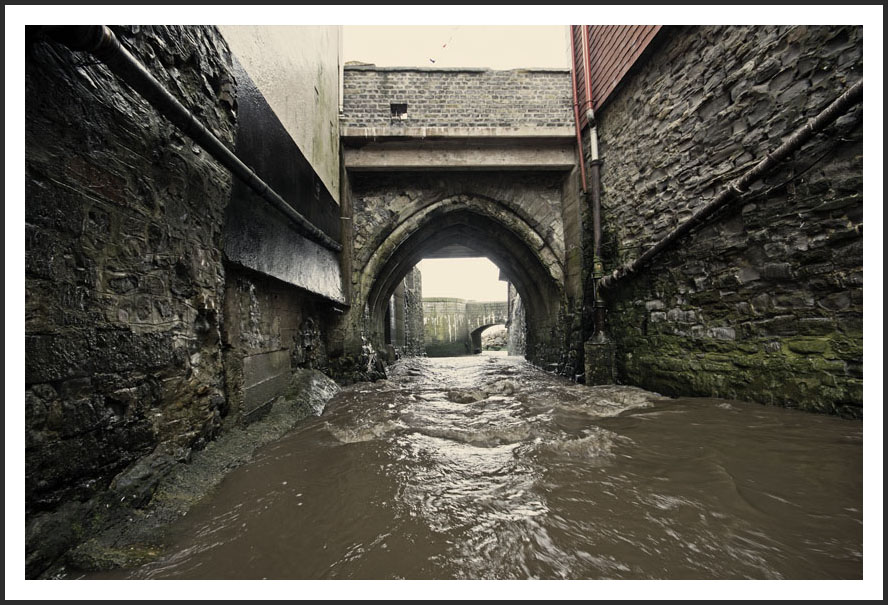
And finally the last bridge which enables pedestrian access to Gun Cliff, built in 1995, which hides beneath it an advanced sewage pumping station to remove the need for two crude sewage outfalls and improve bathing quality of the sea water. By this time the rain had started again so it was quite a trick to keep the lens clear.
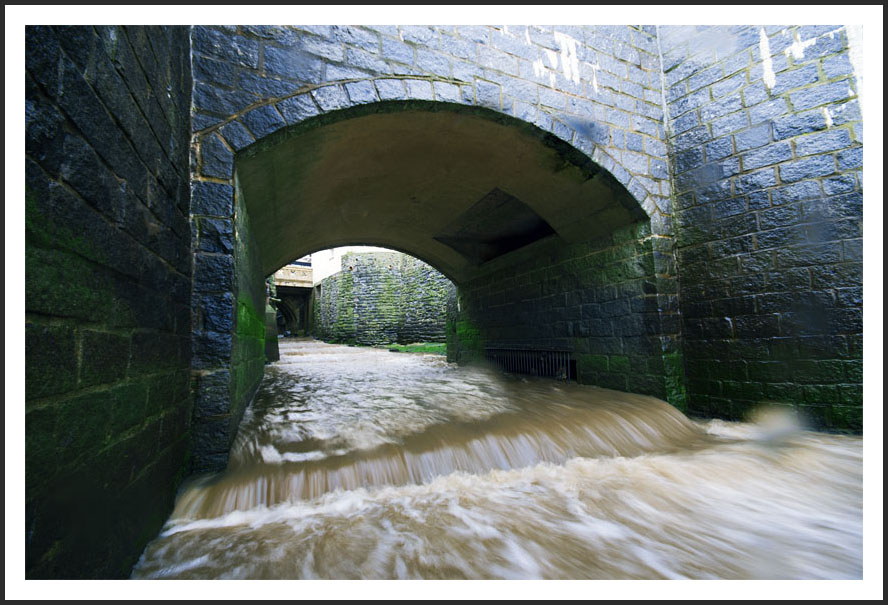
After this the river merges into the sea, never to be seen again. And so I scramble up the sea defences and head back home for a bath and a tea.
